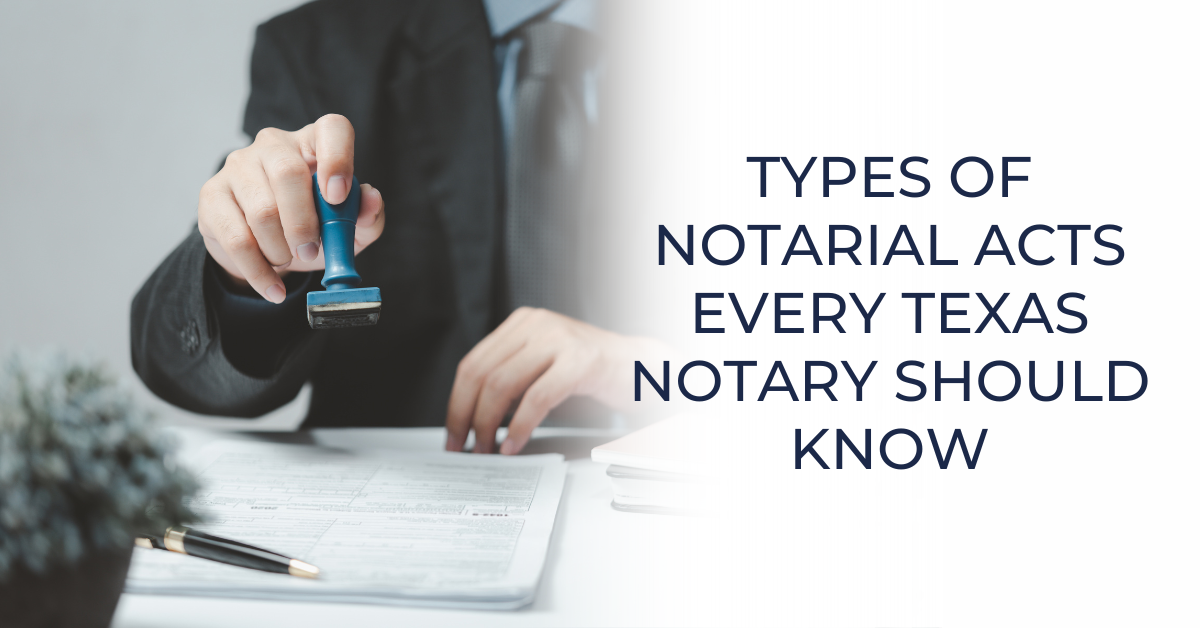Notary Public Underwriters Blog
Types of Notarial Acts Every Texas Notary Should Know
- Details
- Published: October 27, 2025

Oaths and Affirmations
An oath and an affirmation are equivalent in the eyes of the law. Both attest to the truthfulness of a statement or document and can lead to perjury charges if the person is found to have lied. Each requires the notary to read a statement to the individual and receive a verbal response. The document must be signed in the notary's presence.
The difference lies in wording:
- An oath includes a reference to a Supreme Being.
- An affirmation does not reference a deity and serves as a secular alternative.
The following may require an oath or affirmation:
Applications
Some government or legal forms, such as disability claims, passport applications under special circumstances, or notary applications, may require a sworn affidavit or declaration.
Affidavits
An affidavit is a written statement of truth made by the affiant (the individual making the statement). It is not written by the notary but must be accompanied by an oath or affirmation.
Depositions
A deposition is a statement given outside of court that is typically transcribed and later used in court proceedings. A notary may swear-in an individual and record testimony related to a particular matter pending before a court.
Acknowledgments
The acknowledgment is one of the most common notarial acts. It verifies that a document was signed freely and voluntarily by someone who understands its contents.
Key points about acknowledgments:
- The signer does not have to sign in the notary’s presence, but they must appear before the notary to acknowledge they signed the document.
- A verbal acknowledgment (not an oath) is required.
- The notary may request the signer to re-sign in their presence if they are uncomfortable proceeding otherwise.
- Unlike an oath or affirmation, an acknowledgment does not attest to the truthfulness of the document's content—only that the signature was willingly provided.
For more on this, see our blog: “The Difference Between Acknowledgments and Jurats.”
Certifying a Copy
A certified copy confirms that a photocopy is a true and accurate reproduction of an original document. This is often used in business transactions or when someone must submit information but wants to retain the original.
Important guidelines:
- A notary cannot certify copies of certain documents, including recordable documents like birth or marriage certificates.
- A certified copy must be made from the original, not another copy.
- The notary should personally make the photocopy to ensure that it is an exact and complete copy of the original document.
Be sure to review the list of prohibited documents and copy certification requirements before proceeding. A full list can be found in the Texas Notary Handbook.
Related Article(s)
The Difference Between Acknowledgments and Jurats
Types of Documents You Can and Cannot Notarize
What to Do When the Notarial Certificate Is Missing?
Notarial Certificates – Scrutinize Every One!
When Can a Notary Use Personal Knowledge to Identify a Signer?
Top Ten Mistakes That Notaries Make
Can a Notary Notarize a Family Member's Signature?
Notary FAQs: Essential Answers for Everyday Scenarios
How to Avoid Common Mistakes During a Notarization
Does a Notary Need to See the Entire Document When Notarizing?
Can a Notary Correct a Mistake on the Notarial Certificate?
